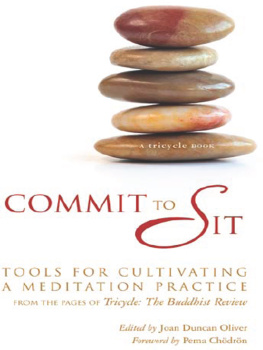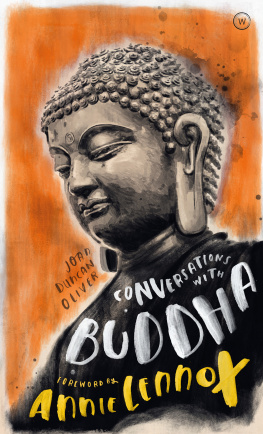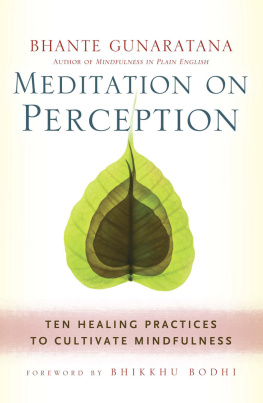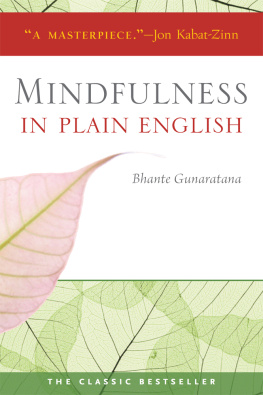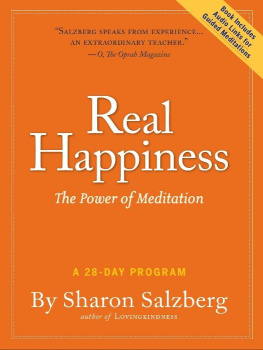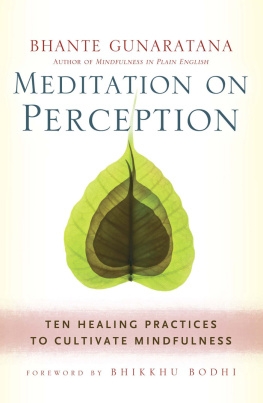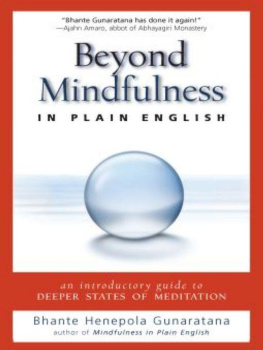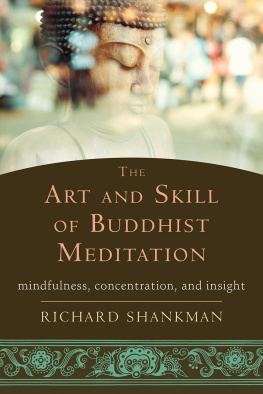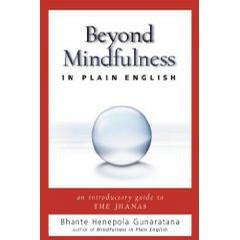Joan Duncan Oliver - Commit to Sit: Tools for Cultivating a Meditation Practice from the Pages of Tricycle
Here you can read online Joan Duncan Oliver - Commit to Sit: Tools for Cultivating a Meditation Practice from the Pages of Tricycle full text of the book (entire story) in english for free. Download pdf and epub, get meaning, cover and reviews about this ebook. year: 2009, publisher: Hay House, genre: Religion. Description of the work, (preface) as well as reviews are available. Best literature library LitArk.com created for fans of good reading and offers a wide selection of genres:
Romance novel
Science fiction
Adventure
Detective
Science
History
Home and family
Prose
Art
Politics
Computer
Non-fiction
Religion
Business
Children
Humor
Choose a favorite category and find really read worthwhile books. Enjoy immersion in the world of imagination, feel the emotions of the characters or learn something new for yourself, make an fascinating discovery.
- Book:Commit to Sit: Tools for Cultivating a Meditation Practice from the Pages of Tricycle
- Author:
- Publisher:Hay House
- Genre:
- Year:2009
- Rating:5 / 5
- Favourites:Add to favourites
- Your mark:
Commit to Sit: Tools for Cultivating a Meditation Practice from the Pages of Tricycle: summary, description and annotation
We offer to read an annotation, description, summary or preface (depends on what the author of the book "Commit to Sit: Tools for Cultivating a Meditation Practice from the Pages of Tricycle" wrote himself). If you haven't found the necessary information about the book — write in the comments, we will try to find it.
From the pages of Tricycle, the countrys most widely read Buddhist magazine, comes Commit to Sit, an introduction to the art of meditation. In recent years, interest in meditation has grown to include not only those on a spiritual search, but also those who are simply working toward a healthy and meaningful life.
This book brings together a broad range of Buddhist meditative techniques that have appeared in the magazine over the years. Contributors include some of the foremost voices in contemporary Buddhism: Pema Chdrn starts our journey with an inspirational Foreword. Lama Surya Das explores the definition of meditation, while Sharon Salzberg and Joseph Goldstein lay out a 28-day program for establishing a daily practice. Wherever you are on your search, you will find plenty of guidance in this book. Learn about insight meditation from Bhante Henepola Gunaratana and Sylvia Boorstein. Or about zazen from Barry Magid and Martine Batchelor. Gil Fronsdal offers instruction in metta (lovingkindness) meditation, while Judith Simmer-Brown teaches tonglen, a Tibetan Buddhist practice for cultivating compassion. We also learn about the crucial role the body plays in meditation from S. N. Goenka, Reginald Ray, Wes Nisker, and Cyndi Lee. We receive guidance on managing issues that arise in meditation from Jon Kabat-Zinn, Christina Feldman, Matthieu Ricard, Pat Enkyo OHara, and others. And there are practices for bringing mindfulness and compassion to daily life from Thubten Chodron, Sayadaw U Tejaniya, and Michael Carroll.
Though targeted to the reader who would like to begin meditating, this collection also offers support and guidance to the experienced meditator working to sustain a lifelong practice. This is a guide to meditative practice for any seeker wishing to deepen their understanding of themselves and their world.Joan Duncan Oliver: author's other books
Who wrote Commit to Sit: Tools for Cultivating a Meditation Practice from the Pages of Tricycle? Find out the surname, the name of the author of the book and a list of all author's works by series.

